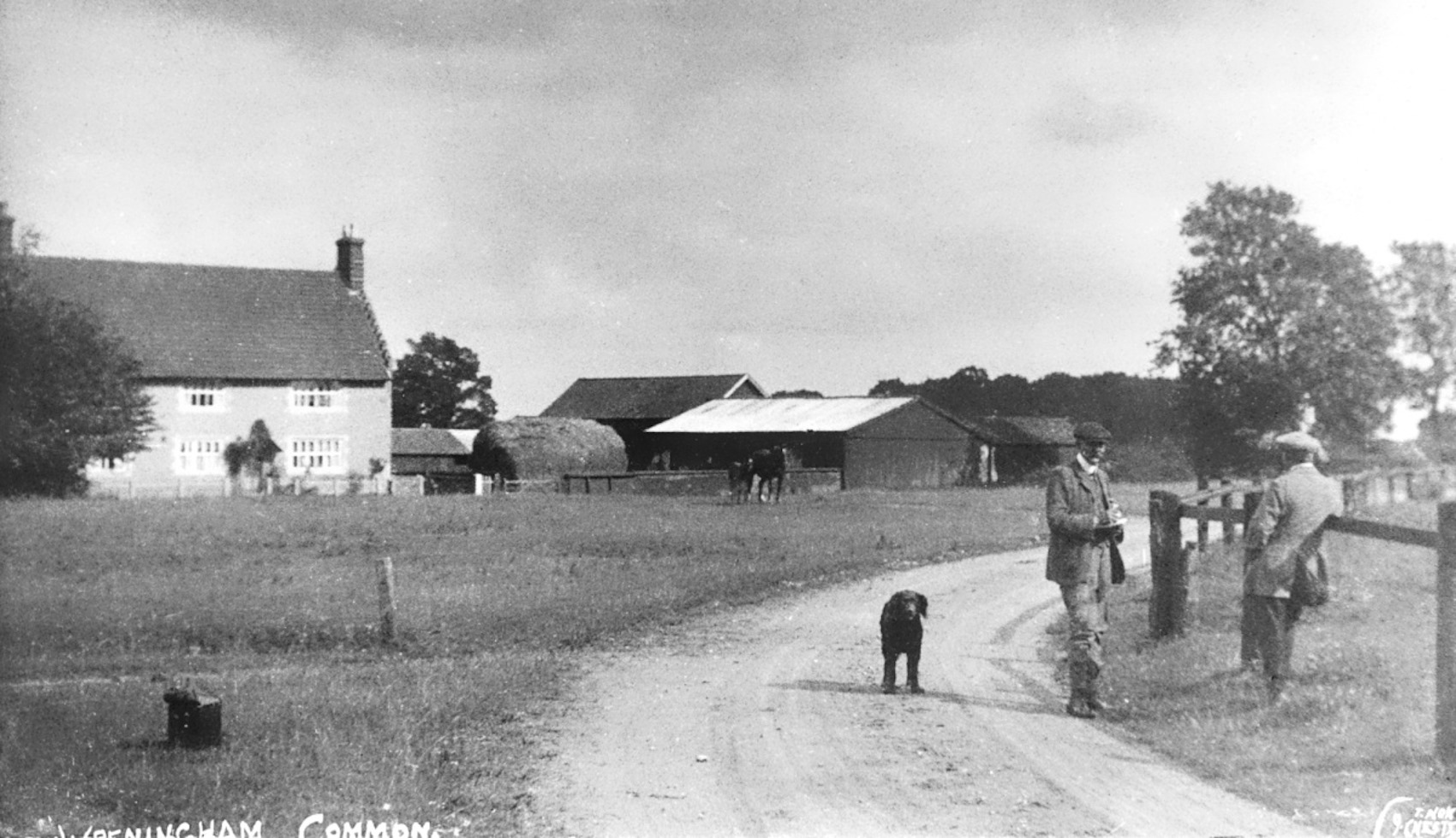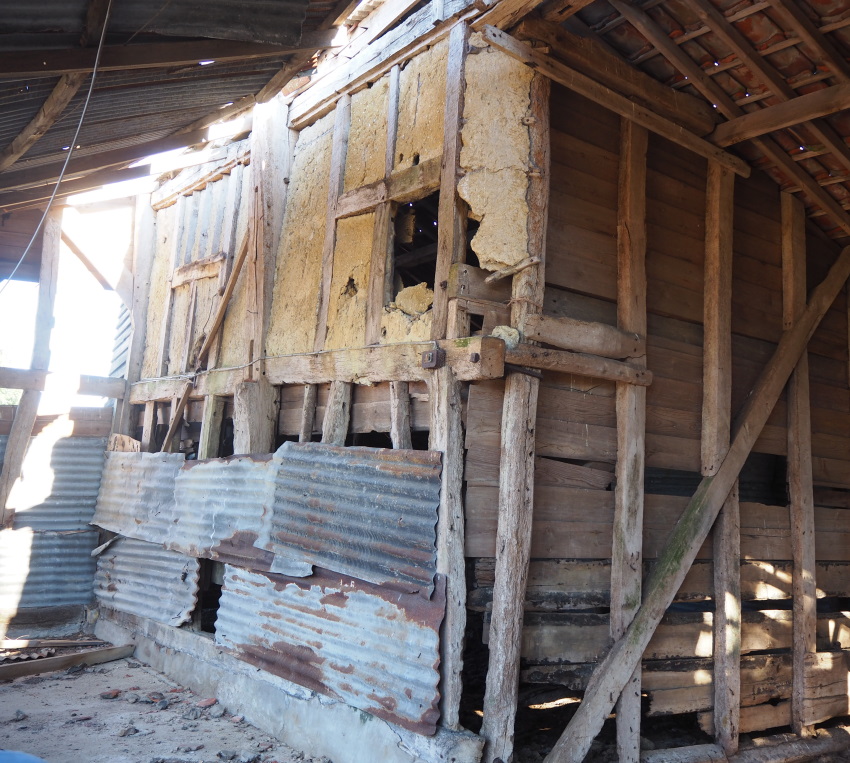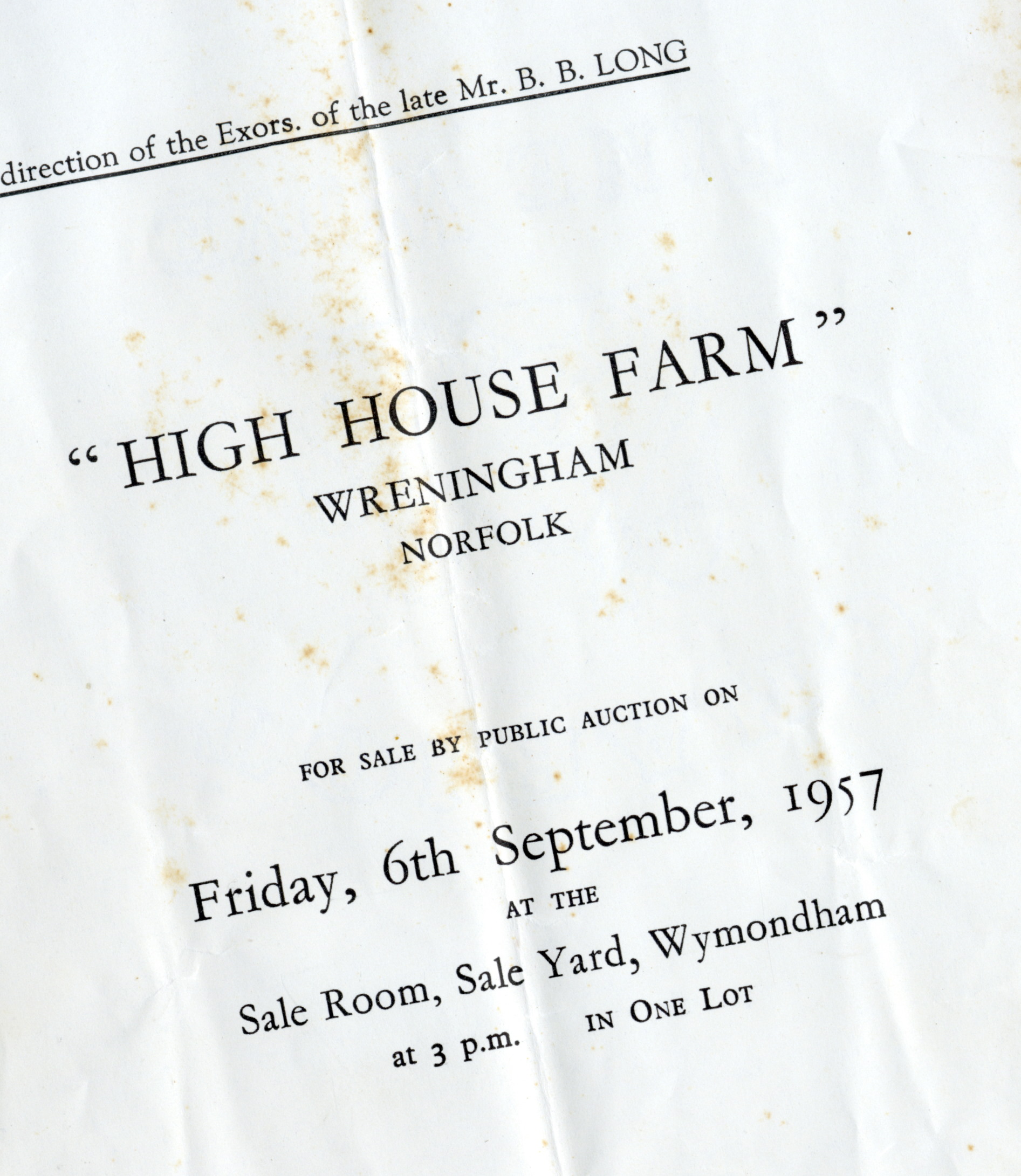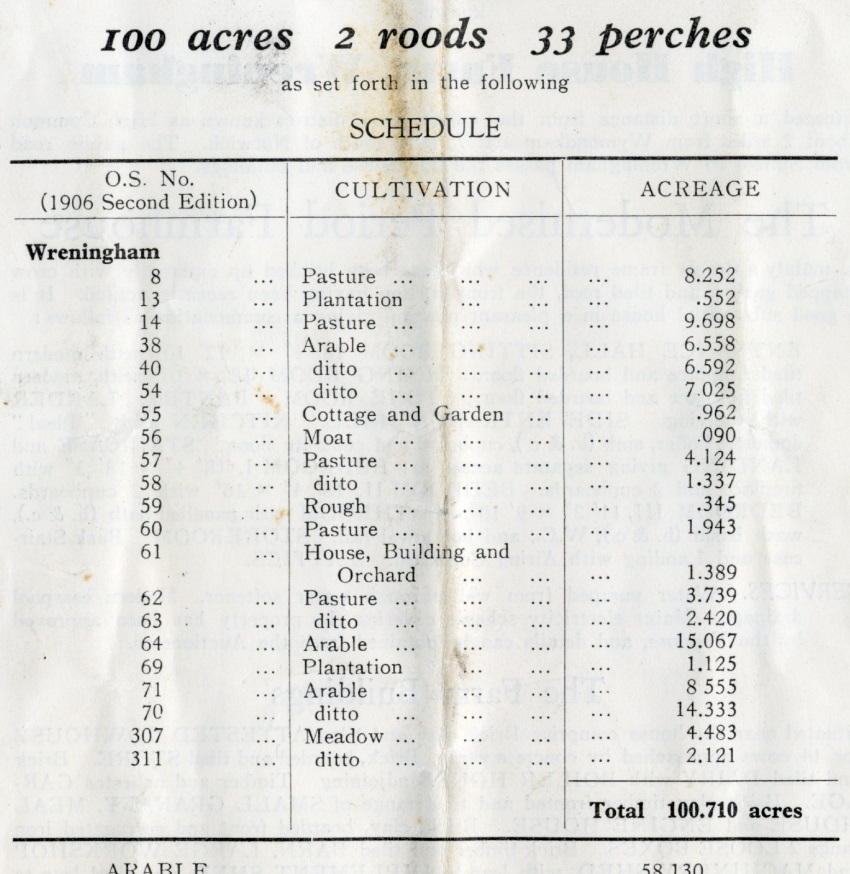
Photograph by Tom Nokes of Norwich
The Rushbrooke family came to this area from Scoulton, Norfolk, in the early 1800s.
After moving to Wreningham (from Silfield), Thomas Allen Rushbrooke snr held the tenancy of the 250 acre High Common Farm until his death in 1853. The Electoral Registers for 1840 (and possibly from before that date) show him as a having “Freehold House and Land” at High Common. This appears to be a reference to the 90+ acre High House Farm because the 1969 auction map shows the boundaries of High house Farm marked as “Rushbrooke Trustees”.
The same Electoral registers show that by 1850, Thomas Rushbrooke snr has returned to his original home of Scoulton, with High House Farm in the tenancy of James Worman, whilst son, Thomas Rushbrooke jnr, remains as tenant at High Common Farm. In May 1852, a newspaper advertisement stated that a 94 acre farm was “To Let” and to “apply to Mr Rushbrooke, Wreningham who will shew you the premises”. The following year, Thomas Allen Rushbrooke snr passed away.
Sometime after the 1869 Great Farm Auction, Thomas Allen Rushbrooke “jnr” appears to have moved to Wymondham although still owning High House Farm. Meanwhile, his surviving son – out of two, Thomas Lane Rushbrooke had been farming (a tenancy?) at Silfield.
The tenancy of High House Farm now appeared to be with Samuel Mullinger. This tenancy was referenced in the Electoral Registers (at “High Common”) between 1866 and 1890. The 1876 survey document for the GER railway confirms this High Common location being Rushbrooke land – with the boundaries precisely corresponding to those of High House Farm. The 1871 census describes Samuel Mullinger employing 5 men and a boy.
In 1893, (the younger) Thomas Allen Rushbrooke died. By this time, his son Thomas Lane Rushbrooke had become the tenant at High House and his father’s various properties were by put up for auction at the Royal Hotel in Norwich. The auction included a 12 acre small holding at Scoulton which, presumably, had once been owned by the senior T A Rushbrooke? Although one of the auction properties listed was High House Farm, it was retained and Thomas Lane Rushbrooke continued as its occupier.
Twelve years later, in September 1905, a notice appeared in the press stating: “On Monday October 2nd 1905 Thomas Lane Rushbrooke is giving up farming.” Just over a month after that, on the 11th of November, he died – aged 72.
In June 1906, the farm was in the tenancy of Burton Bullimore Long and High House Farm was back up for auction. It failed to make its reserve price and was withdrawn from the auction at £1,175. In due course, it was sold – with Burton Bullimore Long remaining as its occupant.
We expect to add more to this story as time and opportunity permits.
Situated close to the main house is the ruin of what is believed to be a much older building.
Constructed with an oak frame, the structure includes the remains of mullion windows. Many years ago, it had been converted into a barn. In 2022, a visit was made to carry out a survey of the structure. The report is here.
Today, there is continuing debate about its potential future.
This photograph is not taken from the strange angle. It really does lean over!

The present-day National Heritage List for England includes High House Farmhouse
The Modern Era


In 1957, the farm came up for auction. Some of the details are shown above.
